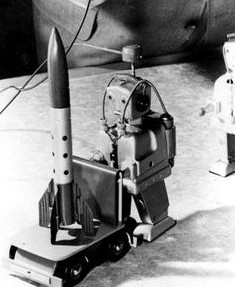Will robots rise up and kill humans? Only if it’s a just universe.
I’m only half-kidding about that.
Maybe Weak AI will someday unwittingly cause a cascading disaster that dooms or us, or Strong AI, should it be developed, will take an instant disliking to our messy breathing and snuff it out, but even far short of these doomsday scenarios, it’s awfully difficult for carbon and silicon to simply be coworkers. A freestyle-chess collaboration between humans and robots will probably be necessary for progress on Earth in the short- and medium-term, and it’s even trickier when these two partners are blasted into space.
In an essay at The Conversation, space roboticist Riccardo Bevilacqua thinks about the difficulty of collaboration out there. “The question for the future,” he writes, “is how we transmit intent between humans and robots, in both directions.” An excerpt:
When I bought an autonomous vacuum cleaner, one that roams the house on its own, I thought I was going to save time and be able to enjoy a book or a movie, or play longer with the kids. I ended up robot-proofing every room, making sure wires and cables are out of the way, closing doors, placing electronic signposts for the robot to follow and much more – often daily. I cannot fully understand or predict what the system will do, so I don’t trust it. As a result, I play it safe, and spend time doing things to accommodate the needs I imagine the robot might have.
As a space roboticist, I think about this sort of problem happening in orbit. Imagine an astronaut on a spacewalk, working on repairing something damaged on the outside of the spacecraft. Several tools might be needed, and parts to mend or replace others. An autonomous spacecraft could serve as a floating toolbox, holding parts and tools until they’re needed, and staying close to the astronaut as she moves around the area needing to be fixed. Another robot could be clamping parts together before they are permanently fastened.
How will these robots know where they’ll be needed to go next, to be useful but not in the way? How will the astronaut know whether the robots are planning to move to the place she actually needs? What if something comes loose unexpectedly – can the person and the machinery figure out how to stay out of each other’s way while handling the situation efficiently?•
Tags: Riccardo Bevilacqua

